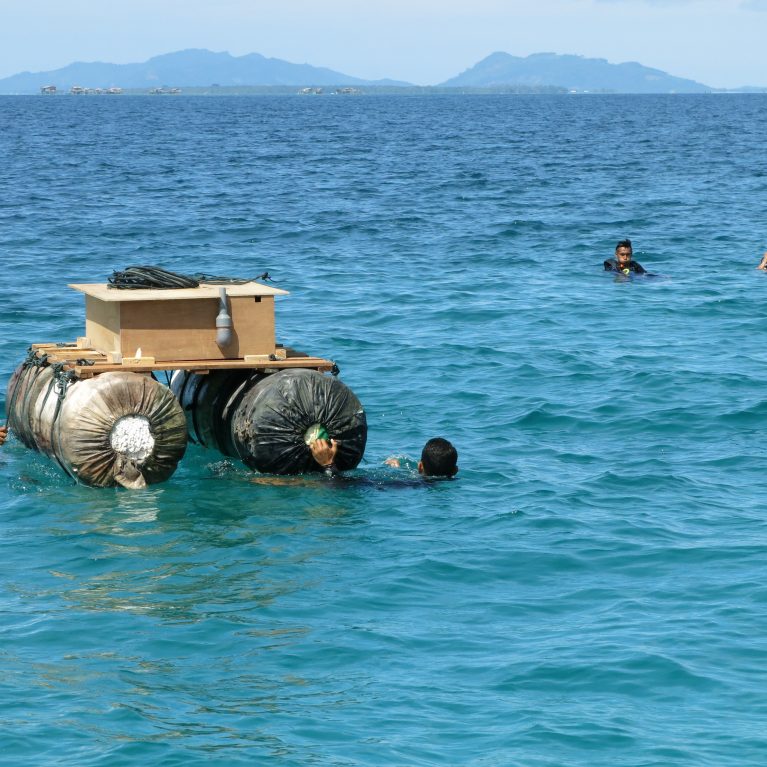Fighting fish bombers
Fishing using explosives is severely destructive and illegal, but perpetrators are seldom prosecuted. Elizabeth is developing underwater listening devices that will alert rangers to the site of an explosion allowing them to catch bombers red-handed.
Family seaside holidays, swimming, rock pooling and snorkelling, then learning to dive while still at school; add an insatiable interest in wildlife and that was my pathway to becoming a marine biologist. Early days were spent exploring British waters and getting acquainted with our native marine life, but then in the mid-1970s came the chance to get a taste of tropical seas.
Combating destructive fishing in Sabah using an innovative acoustic system
To eliminate fish bombing in the recently gazetted 350 square-kilometre Tun Sakaran Marine Park in Sabah.
Fish bombing is one of the most destructive forms of fishing known and has been rampant in the park area for the past 50 years, causing severe damage to the health and biodiversity of coral reefs, the local economy and livelihoods of other fishermen. The project will not only help protect biodiversity in this exceptional area in the heart of the Coral Triangle, but will provide a model and inspiration for similar initiatives elsewhere in Sabah and further afield, where fish bombing is still causing major habitat destruction.
Coral reefs around the world are under severe stress with those in South-East Asia in particular trouble. In some countries, including Malaysia, destructive fishing is one of the greatest threats. Fish bombing on and around coral reefs began in Sabah during World War II using munitions, including hand grenades, but fishermen now use home-made bottle bombs packed with fertiliser and kerosene, and detonated by a fuse inserted through the top. The bombs are deployed from small boats, and may be used at any time of day and even at night. Fish bombing is illegal and many local fishermen condemn it, but others still use this method because it is quick, relatively simple and yields a large ‘catch’ in a short time. Apprehending fish bombers is difficult because of the large areas that need to be patrolled, the shortage of manpower and the stealthy tactics employed by bomb fishermen to avoid being caught. The acoustic system is designed to solve this problem.
The aim of the project is to eliminate fish bombing from the Tun Sakaran Marine Park and prevent further destruction of the reefs. This will be achieved by developing and installing a unique and novel passive acoustic monitoring (PAM) device that not only detects fish bombs in real time, but also indicates their exact location. The system will consist of clusters of hydrophones that continually feed information to a base unit containing software calibrated to recognise the distinctive signal generated by an exploding bomb. It will be designed to alert park rangers via mobile phone when this sound is detected. It will also produce a map showing the co-ordinates of the fish-bombing activity. This will enable enforcement staff to respond immediately and send a patrol boat to intercept the perpetrators.


